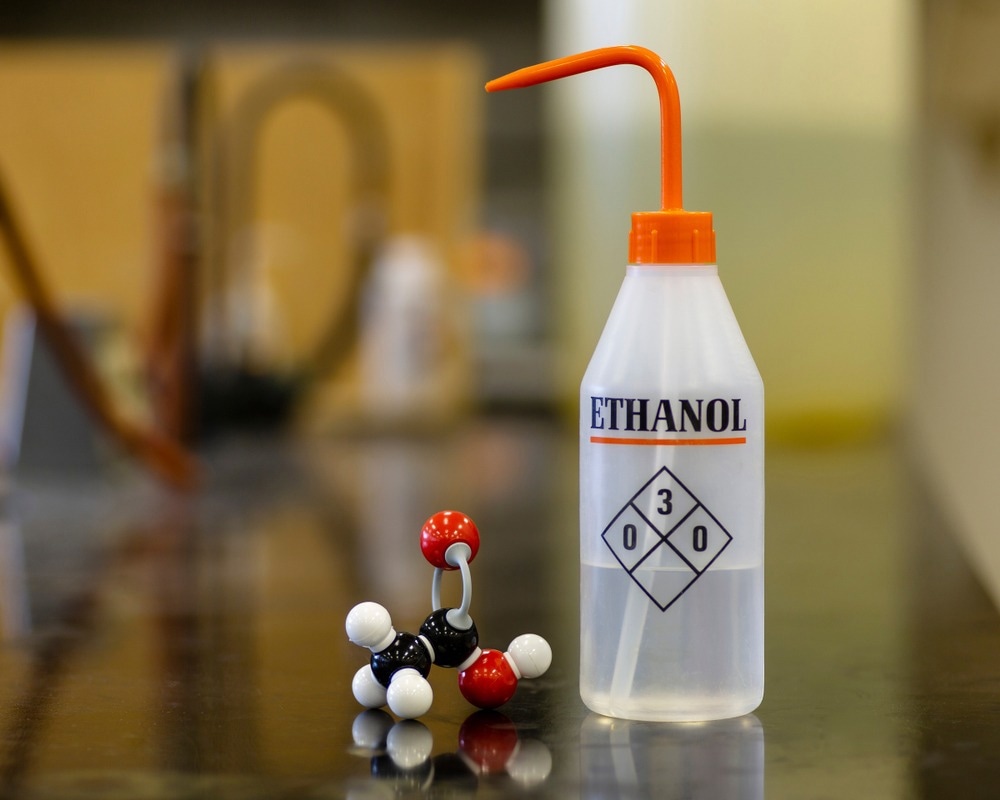In a paper published in Sensors, researchers proposed an inline optical fiber sensor based on a hollow square-core fiber to monitor the real-time evaporation of binary mixtures of ethanol and water.

Study: Optical Fiber Sensor for Monitoring the Evaporation of Ethanol–Water Mixtures. Image Credit: ggw/Shutterstock.com
The optical sensor features two interferometers: one detects the temperature variations, while the other monitors evaporation. These collect data regarding the variation in mixture concentration and the evaporation process.
When coupled with droplet image analysis, the sensor shows significant promise for future applications which require precise volatile organic compound concentration measurements.
Significance of Monitoring Evaporation of Volatile Organic Compounds
Monitoring the evaporation of liquid mixtures and knowing their chemical and physical properties is an area of intense research. Several studies have been carried out to investigate this phenomenon.
Some techniques used commonly are based on image processing, where examining a droplet determines evaporation parameters. These include ion flow tube mass spectrometry, gas chromatography, thermography, and infrared spectroscopy. Optical fiber sensors provide an alternate method with a higher resolution and faster response times.
The role of volatile organic compounds (VOCs) is critical, with their use being cyclical. Their significance is determined not just by demand but also by the risk they pose. These chemicals are widely employed in industrial operations, consumer goods, and even the food and beverage industries.
However, they can be highly hazardous and harmful to the environment and human health, resulting in serious detrimental effects. As a result, their identification has become a serious issue and cause for concern.
Ethanol is a common VOC widely employed in various industries, including the alcoholic beverage, fuel, and chemical and medicinal sectors. Despite its diverse applications, ethanol has several health hazards, including headaches, eye discomfort, and difficulty breathing.
Using an Inline Optical Fiber Sensor to Monitor the Evaporation of Ethanol–Water Mixture
In this study, researchers employed an optical fiber sensor based on a hollow square-core fiber (HSCF) to monitor the evaporation of ethanol-water mixtures.
The sensor has two interferometers: a Mach-Zehnder interferometer (MZI) and a cladding modal interferometer (CMI). By tracking changes in the binary sample's refractive index in real-time, the CMI can identify the evaporation process. The MZI keeps track of changes in the sample's temperature.
An optical interrogator with a resolution of 5 pm helped to acquire the sensor's spectral response over time at an acquisition rate of 10 s to track the evaporation process.
The sensor's capacity to track temperature changes in the sample was investigated. Image analysis was performed for comparative analysis.
Important Findings of the Study
The solution's refractive index did not change when water evaporated (0 weight percent), causing the cladding modal interferometer to respond consistently. After around 1.3 hours, a sudden decrease in wavelength was seen. This coincided with the point in the evaporation process when the droplet had evaporated, and the sensor was mostly covered by air.
There is an initial decrease in wavelength for solutions containing a proportion of ethanol, which tends to stabilize at a higher value than pure water. This indicates that ethanol molecules that did not evaporate are still present in the remaining solution.
A minor increase in the wavelength is seen in the sample of 100-weight percent ethanol up to around 6 minutes, indicating a slight increase in the refractive index. This can be explained by the ethanol's hygroscopicity, which results in the adsorption of water molecules.
Compared to other solutions, ethanol evaporated more quickly due to its high degree of instability and the tiny volume of solution.
With a maximum sensitivity of 387 nm/RIU, the sensor could track changes in the solution's refractive index, enabling real-time monitoring of changes in ethanol concentration during the evaporation process.
The optical fiber sensor data, together with the information provided by image analysis, is capable of evaporation monitoring, not just ethanol-water combinations but also other volatile organic binary mixtures.
The imaging process depicts the evolution of specific characteristics that the optical fiber sensor cannot detect, particularly at the geometric level, and can provide an easy and rapid approach to forecasting the solution concentration from the outset.
However, the sensor can detect changes in solution concentration and temperature as it evaporates with greater accuracy and in real-time. It can also provide information on the intrinsic features of the solution under study.
Reference
Pereira, D., Bierlich, J., Kobelke, J., Pereira, V., & Ferreira, M.S. (2022). Optical Fiber Sensor for Monitoring the Evaporation of Ethanol–Water Mixtures. Sensors 2022, 22, 5498. https://www.mdpi.com/1424-8220/22/15/5498
Disclaimer: The views expressed here are those of the author expressed in their private capacity and do not necessarily represent the views of AZoM.com Limited T/A AZoNetwork the owner and operator of this website. This disclaimer forms part of the Terms and conditions of use of this website.